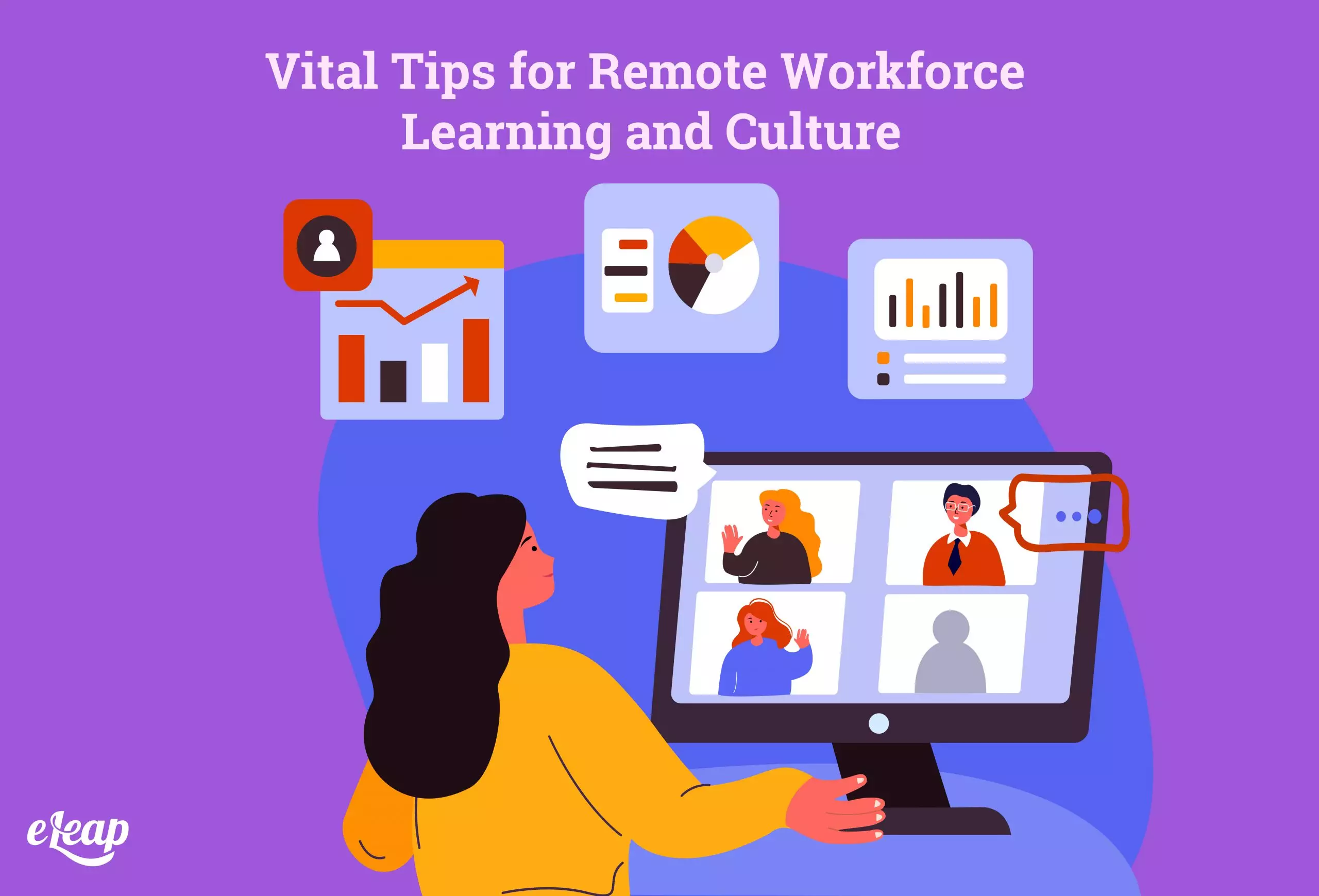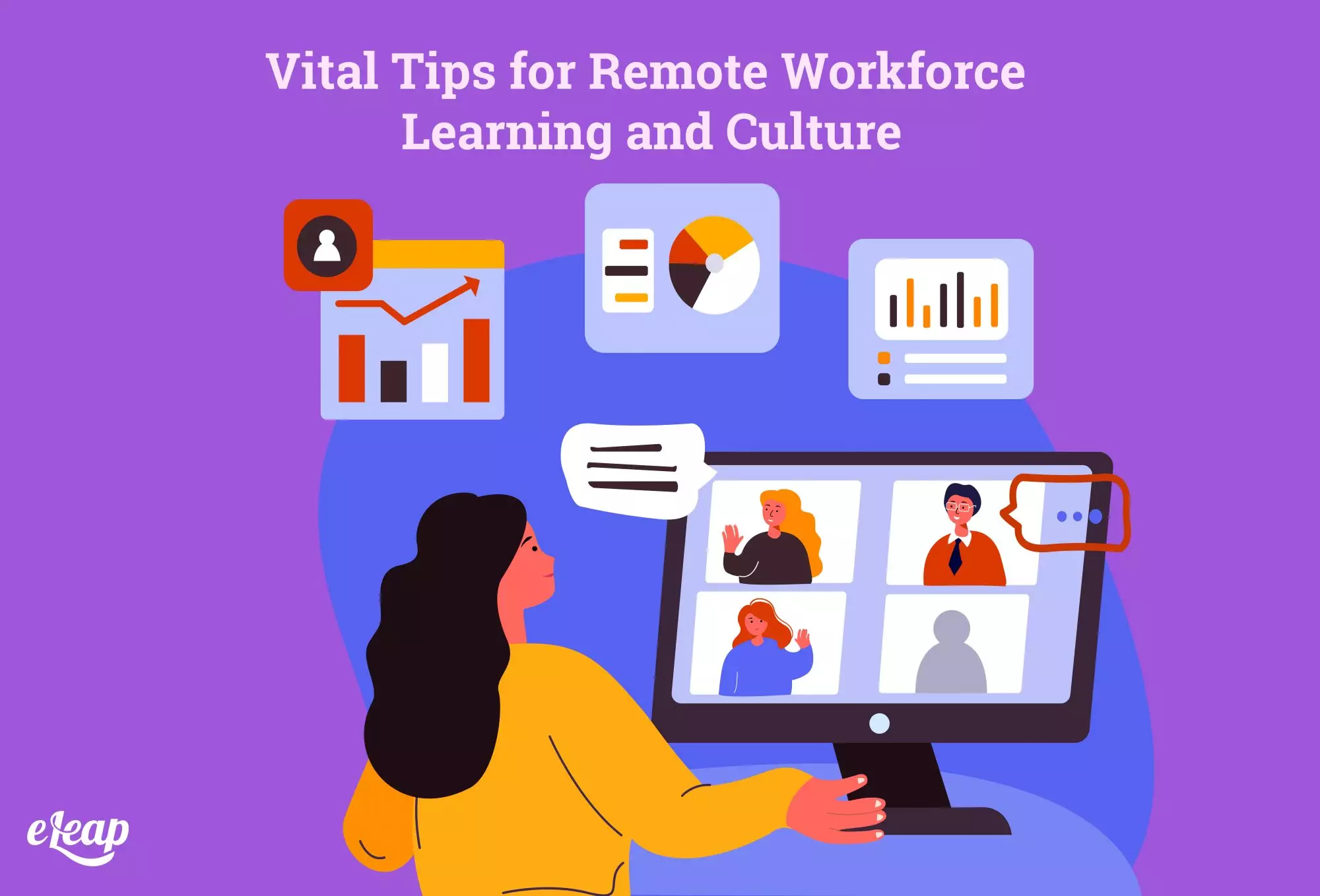Vital Tips for Remote Workforce Learning and Culture

It’s a strange time for most businesses. Before COVID-19, remote workforce probably made up a small percentage of your company. Today, it likely is the norm for most of your workers. It’s unprecedented and can be somewhat frightening, frankly.
The good news is that it doesn’t have to be a daunting prospect. The right tools, the right managerial approach, and the right focus on culture and learning can make this a time of growth, opportunity, and success. All that, even though we’re now socially distancing and rarely see each other except in Zoom meetings.

Host Frequent All-Hands Meetings
If management is nervous about the shift toward remote work, imagine how your employees feel. They’re not just dealing with remote teams, but they have kids at home from school, daycares are closed, they’re worried about their at-risk relatives, and so much more. In times like this, the work family must come together and support its members, and all-hands meetings give you a chance to do this.
How often should you hold these meetings? The cadence is up to you, but it must be more than once per quarter. Ideally, it should be two to three times per week, but the key is to be consistent. Don’t let all-hands meetings fall by the wayside. For many of your workers, these can become touchstones, providing confidence and support in uncertain times.
Provide Clarity and a Path Forward
We live in uncertain times – that lack of certainty has a direct, deleterious effect on your team. People are wondering what’s next. Where do we go? How do we get there from here? How will we ever return to normal?
Those questions can breed anxiety and stress, feeding on our uncertainty, and can lead to unwholesome outcomes. Uncertain people don’t do their best work. They also don’t feel free to be their authentic selves, which damages the sense of psychological safety that’s necessary for an amazing company culture.
As a leader, you have the chance to provide clarity. How, though? Use this opportunity to create a path forward for your individual employees. Then, despite the uncertainty that surrounds each of us, they can look forward with a plan.
What sort of path, though? Actually, you can (and should) develop a two-fold path. One side should be rooted in organizational goals and objectives. Chunk those up so that each individual has goals that align with their talents and role within the business.
The other side should focus on learning and development. Where does the employee want to go in their career? What do they want to achieve? What skills and knowledge will they need to get there? Work with them to map out a learning and development map that charts milestones on their path toward professional fulfillment.
Get Clear on Communication
Communication is perhaps the single most critical thing to get right during the pandemic. As long as your teams are geographically dispersed, you’ll need to go the extra mile here, too. What does that mean, though? You’re a seasoned leader and know that clear communication is vital, so how does remote work differ?
You’ll find several concerns here, particularly if you’re used to checking in with your teams every quarter. The first thing you need to do is chuck that notion out the window. Communicate now, today, and then do it again tomorrow. Rinse and repeat.
It’s also important that you integrate (potentially) new communication channels and use them regularly. Engaging with your teams is critical. What channels, though? Some of the more obvious include:
- Zoom or another video conferencing tool
- Slack or a similar tool
- Trello or a similar tool
However, just as important as the tools you use is the message that you’re sending. What are you communicating? Answer = everything. If you can communicate it, you should. A few examples include:
- Company decisions
- Why you’re making those decisions
- Regular updates about the company’s efforts and initiatives
- Success stories from team members
- Challenges team members are having with remote work
Focus on the Culture You Want to Create
There’s a misconception out there that company culture is something static. It can be, but the truth is that when there’s motivation, culture is dynamic. It changes, grows, and evolves over time. It’s a living thing.
This is your opportunity to begin changing your company culture or reshaping it into something that fosters greater connection, resilience, and strength across your teams. How do you do that, though? It’s not as hard as you might think.
First, know what you want in terms of company culture. For many, now is the time to begin creating a culture of learning and innovation. You might want to create a culture that values each team member for their authentic selves, and one that focuses on transparency and vulnerability to enhance efficiency, productivity, and engagement.
It’s never too late to build a culture that helps employees feel connected, engaged, and valued. Learning and innovation are part of that. There has never been a better time to begin reinventing your culture, either.
Learning and Leadership Can Be Simple
As you can see from what we’ve covered, learning, and leadership in the age of COVID-19 can be surprisingly simple. It’s all about intentionality and having the vision in the first place. Once you know where you want to go and what must be done to get there, it becomes possible to design a roadmap to success. With the right planning and commitment to valuing your team members, everyone can come along on the journey, building a stronger, more resilient company even in a time when social distancing and remote work are the norms.